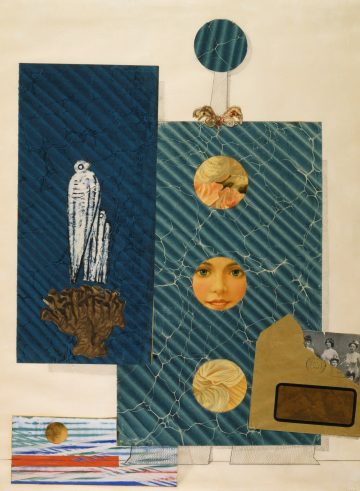Max ERNST 1891-1976
Max Ernst was born in Brühl, Germany, in 1891. A painter and sculptor, his work is associated with the Dada and Surrealist movements. He created his first paintings, hand prints and collages in 1919. Working in a variety of media, his work was inspired by the psychology and art of the mentally ill. From 1922 onwards, he created collages using banal materials such as scientific manuals and illustrated catalogues. That same year, he arrived in Paris and, along with his Surrealist colleagues, discovered the possibilities of automatism and dreams. He sometimes carried out his artistic research using hypnosis or hallucinogenic substances. In 1925, he experimented with the rubbing technique, inspired by the technique of taking archaeological footprints. In 1934, he began sculpting models from his personal mythology. In his work, he often drew on his childhood and wartime experiences. The scenes can be absurd and apocalyptic, microscopic or monumental, and are often marked by humour and introspection. He died in Paris in 1976.
Max Ernst is known the world over. He organised the First International Dadaist Exhibition in Berlin in 1920, and in 1933 he took part in the 6th Salon des Surindépendants with the Surrealist group. In 1991, to mark the centenary of his birth, the Centre Georges Pompidou in Paris devoted a retrospective to him. The Max Ernst Museum in his home town of Brühl opened in 2005, exhibiting over 300 of his works.
Collection Peggy Guggenheim, Venise 1932
In this facsimile of the Postman Cheval work in the Peggy Guggenheim collection in Venice, the artist has composed a collage of heterogeneous elements. In the first collage, a dark blue with cracks, two white birds have flown over a coral reef. It should be noted that Max Ernst had a great fascination for birds, which led him to create “Lolpop”, his alter ego, in 1928. On the right, a porcelain, juvenile female face smiles in a cut-out circle surrounded by water. Two other circles are arranged above and below this portrait to reveal his tie and the flowers on his hat. In a reference to the work of the Postman Cheval, an ajar envelope contains a photograph of several women. The envelope has no addressee but is stamped with the year 1932. It is important to note that Max Ernst appreciated the Rhône-Alpes region. In 1937, he bought and decorated a house in Saint-Martin-d’Ardèche, and in 1950, he discovered the work of Le facteur Cheval during a visit to the Palais with his wife Dorothea Tanning and André Breton.

